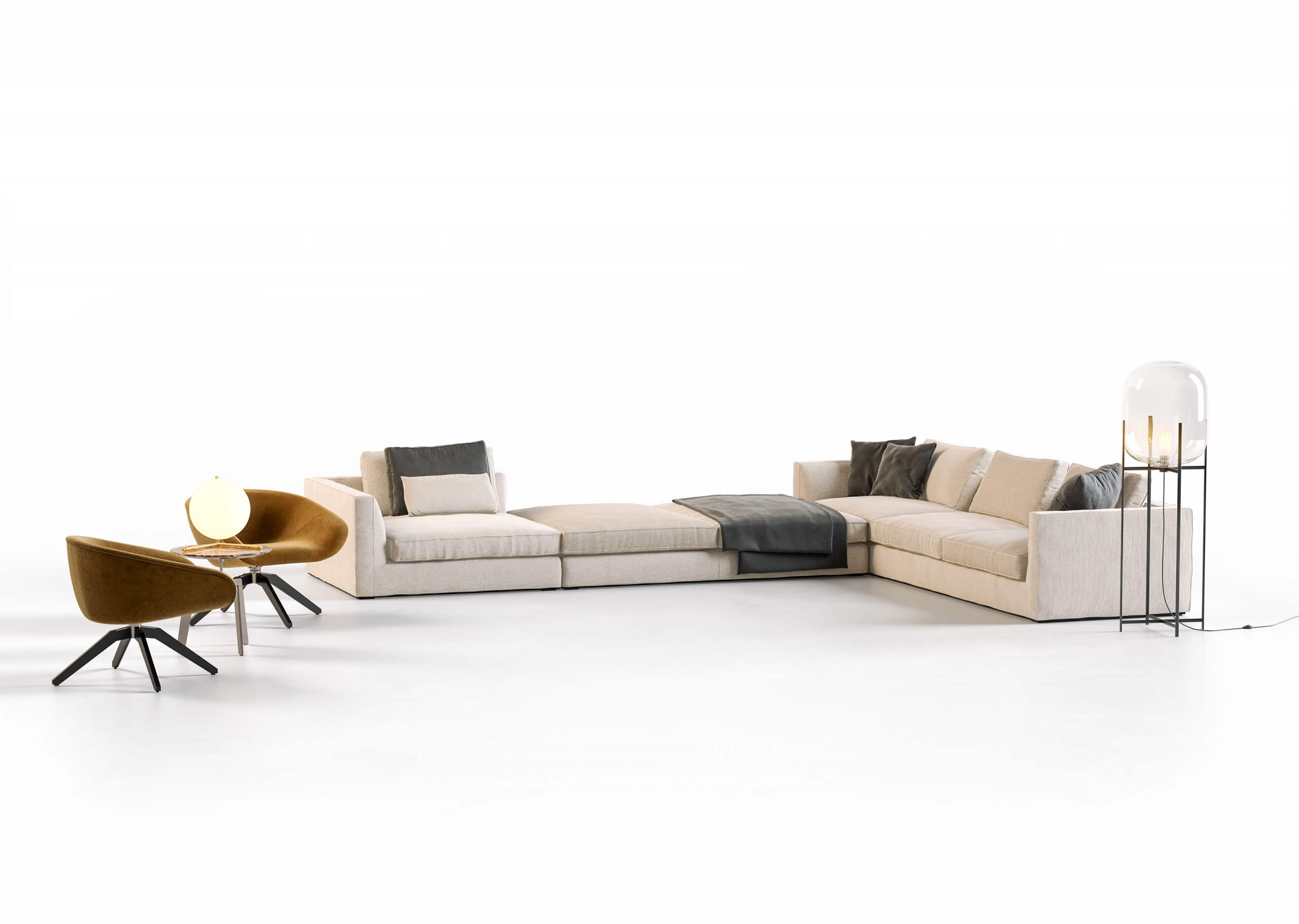In the rapidly changing world of online retail, businesses must stay ahead of the curve to achieve success. Brands have to be flexible and leverage new ways of marketing and product presentation. That’s because everyone knows that captivating visuals are what drives the sales of the product. So businesses — furniture manufacturers and retailers in particular — have turned to 3D commerce to provide people with interactive and memorable shopping experiences.
Our 3D rendering company will tell you all about how and why 3D e-commerce has become one of the biggest trends in retail. Let’s dive in!
#1. Evolution of E-Commerce
Online commerce traces its roots back to the early days of the Internet. The first-ever online purchase was made in 1994, and since then e-commerce has become a multi-billion dollar industry that forever changed the way we think about shopping.
As the technologies advance though, e-commerce moves forward too. In recent years, most brands have shifted from traditional product photography to 3D marketing. The interactive aspect of those digital visuals is what attracted the customers. The ability to examine the item’s every detail ensures that the product’s appeal is conveyed fully without the need to visit physical stores.
#2. Technological Advancements
The emergence of augmented and virtual realities has advanced 3D commerce even more. With interactive product views of AR and fully virtual environments of VR, these technologies ensure a brand-new, more immersive experience for customers.
For both of these approaches, 3D models are essential. Such 3D product listings provide informative representations of the merchandise, which leads to customers understanding the concept and functionality of the item better. This, in turn, results in a more confident decision-making when considering the purchase.
#3. Enhanced Customer Experience
But why is 3D commerce beneficial for customers? Let’s look at a couple of examples. First of all, these CG images provide an interactive product exploration. A furniture customer, for instance, can examine the item thoroughly from every angle and even change its design features. This leads to a personalized commerce experience and creates an emotional connection with the brand. The result of it is a satisfied customer who will certainly return to use the business’s services.
Furthermore, what if a person wonders if a furniture item would fit in their home? By leveraging one of the biggest e-commerce product trends in 2024 — AR, brands can give people an option to use a virtual try-on feature. Using their phone camera, a customer can see what a particular couch would look like in their living room, for example. What this would achieve is reducing the uncertainty of the purchase, which eventually leads to enhanced brand credibility.
#4. Impact on Retailers
We discovered the 3D commerce advantages for the customers, but how about the benefits for businesses? Firstly, the brands that utilize 3D in their e-commerce are more successful. They attract customers with beautiful visuals and captivate them because people don’t want to see traditional product photography after witnessing the wonders of 3D.
Diverse 3D technologies allow brands to tailor their products to each customer’s specific preferences. As a consequence, their loyalty and satisfaction rate increase substantially, as this personalized approach makes customers more involved in the shopping process.
#5. Outcomes of 3D Commerce Adoption
Furniture retail giants Ikea and Amazon have been utilizing 3D commerce for a while now, and it has now become a widespread practice in the industry. Brands now often provide users with 3D models of the products and even 3D configurators. A recent Shopify study states that the implementation of these innovative technologies has led to an increase of conversion rates by up to 250%.
Small and medium businesses are also using 3D technologies in their online commerce. As the tools for creating CGI become more and more accessible, it allows smaller industry players to stay on the same level as their high-end competitors.
#6. Overcoming Challenges
Some businesses may face challenges in integrating 3D technologies into their online commerce. The most notable of those are budget constraints and lack of expertise. Both of them, however, can be overcome by outsourcing rendering and modeling services to a professional CGI studio. This would allow businesses to tap into modern technology trends without needing to hire and train an in-house team.
What is also important to look out for is the consumers’ engagement with e-commerce. Even though a younger generation understands the appeal, some people may find traditional commerce practices more familiar. This can be changed by educational and awareness campaigns, promoting the features 3D technology brings to the table.
#7. Future Outlook
Overall, the number of brands integrating 3D commerce in their strategies will only increase. But what is the specific area of development?
One of the most prominent trends in the near future will be the adoption of a mobile-centric approach to shopping. With people using their phones now more than ever, it would be wise for brands to establish their own mobile shopping platforms with integrated configurators and AR features.
All in all, 3D commerce has become an integral part of the online shopping world. And it’s not going anywhere, so furniture brands have to use it if they want to provide an enhanced shopping experience for their customers and to stay ahead in the competitive market.
Want to implement CGI in your e-commerce? Use our 3D rendering services to get photorealistic representations of your products!









Leave a Reply
Want to join the discussion?Feel free to contribute!